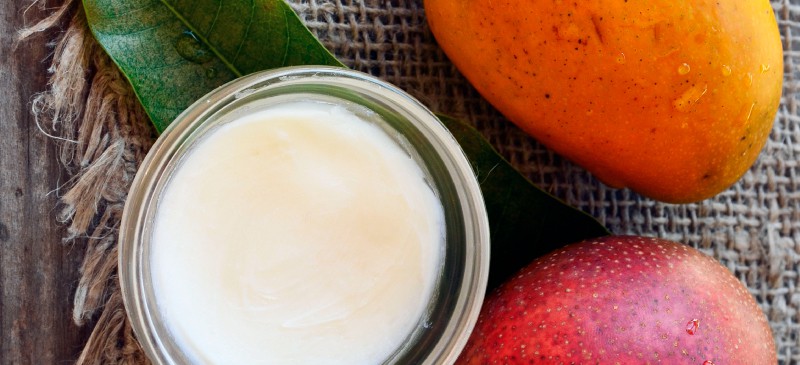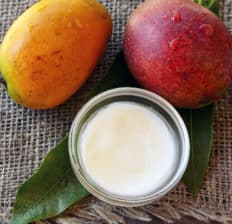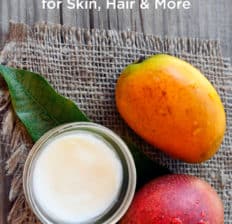This Dr. Axe content is medically reviewed or fact checked to ensure factually accurate information.
With strict editorial sourcing guidelines, we only link to academic research institutions, reputable media sites and, when research is available, medically peer-reviewed studies. Note that the numbers in parentheses (1, 2, etc.) are clickable links to these studies.
The information in our articles is NOT intended to replace a one-on-one relationship with a qualified health care professional and is not intended as medical advice.
This article is based on scientific evidence, written by experts and fact checked by our trained editorial staff. Note that the numbers in parentheses (1, 2, etc.) are clickable links to medically peer-reviewed studies.
Our team includes licensed nutritionists and dietitians, certified health education specialists, as well as certified strength and conditioning specialists, personal trainers and corrective exercise specialists. Our team aims to be not only thorough with its research, but also objective and unbiased.
The information in our articles is NOT intended to replace a one-on-one relationship with a qualified health care professional and is not intended as medical advice.
Mango Butter for Skin Repair, Healthier Hair & More
April 14, 2022

When you think of mango, the first thing that likely comes to mind is the sweet yellow-orange flesh of the fruit that instantly brings you to the tropics. You may be surprised to learn that there’s more to mango than that. The woody kernel in the center of the fruit is jam-packed with healthy fats and nutrients that are extracted to make creamy mango butter.
Like popular shea butter, mango butter can be used on hair and skin for its moisturizing effects. It has a creamy, buttery consistency at cooler temperatures and becomes a light, odorless oil when rubbed into the skin.
Once you know a little bit more about this body and hair care ingredient, it’ll become one of your favorite DIY recipe ingredients.
What Is Mango Butter?
Mango butter is what you get after cold-pressing the fats from mango’s kernel, which creates a creamy butter that can be used on the skin and hair. It has almost no aroma, so it can easily be used as a base in DIY body care recipes or all by itself.
What really makes mango butter special is its nutrition content. It boasts natural antioxidants, vitamins A and E, and essential fatty acids.
It’s known for its light texture that doesn’t leave your skin or hair feeling greasy.
At cooler temperatures, mango oil remains solid, but when it warms or is rubbed into the skin, it becomes a protective oil that’s often used as an alternative to cocoa butter.
Benefits
The benefits of mango butter for skin and hair come from its nutrient profile and nourishing effects. Here’s the rundown:
1. Moisturizes Skin and Hair
Mango butter has a semi-solid consistency, but it quickly melts into a rich oil when it touches the skin. It has a lighter texture than many other vegetable oils or butters, so it won’t leave you feeling greasy.
It does, however, hydrate both skin and hair, soothing dry areas. It provides a protective barrier, keeping bacteria and environmental chemicals from entering your pores.
2. Helps with Skin Repair
The nutrients in mango butter have healing properties, so it can be used to promote skin repair and provide skin protection.
A study published in the Indian Journal of Pharmaceutical Sciences found that a foot cream made with mango butter was able to completely repair worn and cracked skin in human volunteers. Researchers found that the ingredient works as an effective emollient that provides skin protection.
3. Features Antioxidants
The antioxidants found in mango butter help reduce free radical damage that can lead to early aging. Research indicates that oil extracted from mango kernel has a greater phenolic content than many commercial vegetable oils.
Applying it to your skin helps minimize the impact of environmental stressors, like UV rays and pollution exposure that can cause fine lines, wrinkles and other signs of aging skin.
4. Doesn’t Clog Pores
Mango butter works as an emollient that provides a protective barrier on the skin, but it won’t clog your pores, so fear not of breakouts. In fact, the butter melts into a light oil that doesn’t leave you feeling too oily.
It’s considered non-comedogenic, so it doesn’t clog pores and can be used on all skin types. It also has a very mild, even non-detected smell, so people who are sensitive to certain aromas may prefer this one over other options.
5. Reduces Hair Breakage
The nourishing fatty acids in mango butter help reduce hair breakage that naturally occurs overtime and when hair becomes dry. The fats in mango oil seal hair strands and protect it from environmental damage.
It protects your hair from the damage caused by blow drying or using a hot iron, too.
You can also massage it into your scalp to prevent dandruff, flaking and irritation.
How to Use
Use mango butter the same way you should shea or cocoa butter. Simply scoop a pea-sized dollop, rub it into your hands and apply it to your skin.
Rub it into dry or damaged areas in circular motions, especially after bathing or using a cleanser. You can apply other skin products, like makeup, after the butter has been absorbed.
When using mango butter for hair, rub a dime size of butter into your hands, and massage it into the ends of your strands. If you have a dry, flaking scalp, rub a small amount into the area.
You can use it for pre-poo treatments, too. Pre-pooing involves applying hydrating oils or butters to your hair and letting it sit for 30 minutes before shampooing. This helps keep your hair healthy and shiny.
Recipes
Mango butter serves as an alternative to shea and cocoa butters and can easily be swapped in to DIY body care recipes. You can use it as a base in body butter or hair mask recipes.
For instance, combining it with jojoba oil and lavender essential oil makes for a nourishing skin moisturizer.
Try using ½ cup of mango butter instead of shea butter in this Homemade Body Butter Lotion recipe.
Wondering what other skin and hair care ingredients mix well with mango butter? You can combine it with:
- Coconut oil
- Jojoba oil
- Apricot oil
- Argan oil
- Olive oil
- Aloe vera gel
- Beeswax
- Vitamin E oil
- Gentle essential oils (like lavender and frankincense)
Risks and Side Effects
Mango butter is generally safe for topical use. Although it is sometimes consumed, the extraction process may be done at high temperatures that alter the oil’s chemical composition, so sticking to topical use only is recommended.
If you experience redness, itchiness, burning or irritation after using mango oil, discontinue use immediately. People who are allergic to mango should not use the butter, as it’s directly extracted from the fruit’s kernel.
Conclusion
- Mango butter is made by cold-pressing oil from the fruit’s kernel. It becomes a hard, creamy consistency at low temperatures and turns into a light oil when heated.
- The butter or oil is used to promote skin repair, moisturize dry areas or nourish hair strands. It can also help reduce scalp flaking and serves as a protective barrier, working to prevent damage to your hair and skin.
- Using mango butter is easy. It can be applied directly to your skin or hair or combined with other nourishing ingredients, like coconut oil and lavender essential oil.

DIY Mango Body Butter Recipe
- Total Time: 2 hrs
- Yield: 20 applications 1x
Description
The nutrients in mango butter have healing properties, so it can be used to promote skin repair and provide skin protection.
Ingredients
- ½ cup mango butter
- ⅛ cup jojoba oil
- ½ cup coconut oil
- 20 drops essential oil (lavender oil or tea tree oil are good choices)
- medium-sized glass jar
Instructions
- Put mango butter, coconut oil and jojoba oil in glass bowl, then place that bowl in sauce pan that is filled with water. Do not allow any water to get into the bowl.
- Heat stove to medium and mix oils together. Whisk until completely melted.
- Remove the glass bowl from the stove and let it cool for 30 minutes. Add the essential oils and whisk again.
- Once mixed, put in refrigerator for an hour or until solid.
- Remove from the fridge. With a regular mixer or hand mixer, beat the oils until they are whipped and fluffy.
- Fill container with body butter mixture and store at room temperature.
- Apply it after taking a shower or bath, when your skin is still wet. Enjoy!
- Prep Time: 20 min
- Cook Time: 5 min
- Method: Hand mixer
Comments
Please keep comments under 200 characters.



https://www.youtube.com/channel/UCyt2dGrKTf9KpBk1jdUl3oA
Hi, yup this post is truly fastidious and I have learned lot of things from it on the topic of blogging. thanks.
I have not heard of mango butter before, but I will buy some and give it a try on my dry hair. Thank you for the article
You never told how to remover the bitter from the seed pod, I’m guessing to boil it in water until it comes out? Cold press would be different I guess so how exactly is that done?
How long is this shelf stable. Is there possibly two other oils I could use I have reaction to tea tree and not a fan of lavender smell. Thank you
Can Mango Butter be heated to infuse cannabis. I have have been using other oils but would like to add the Mango butter. It will need to be heated to 225 degrees.
thanks Jan